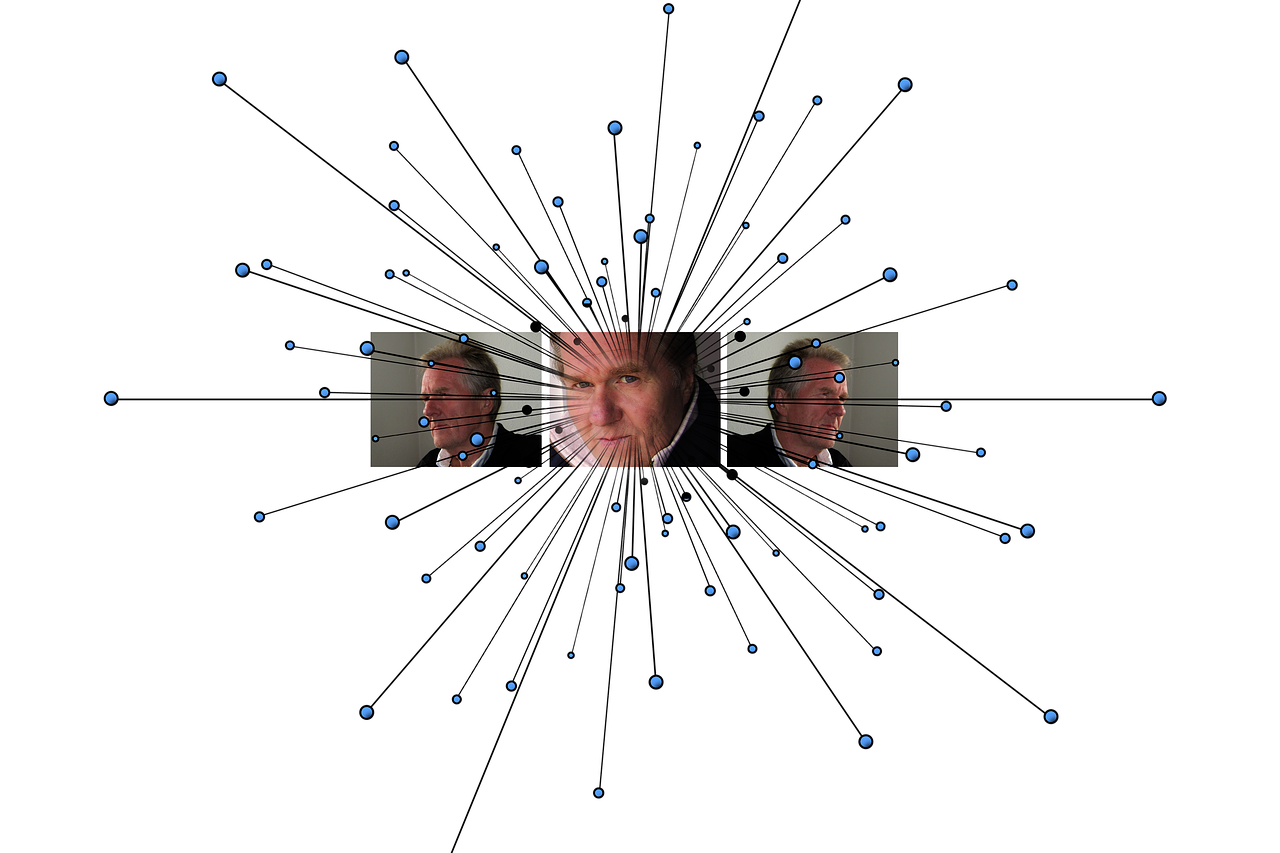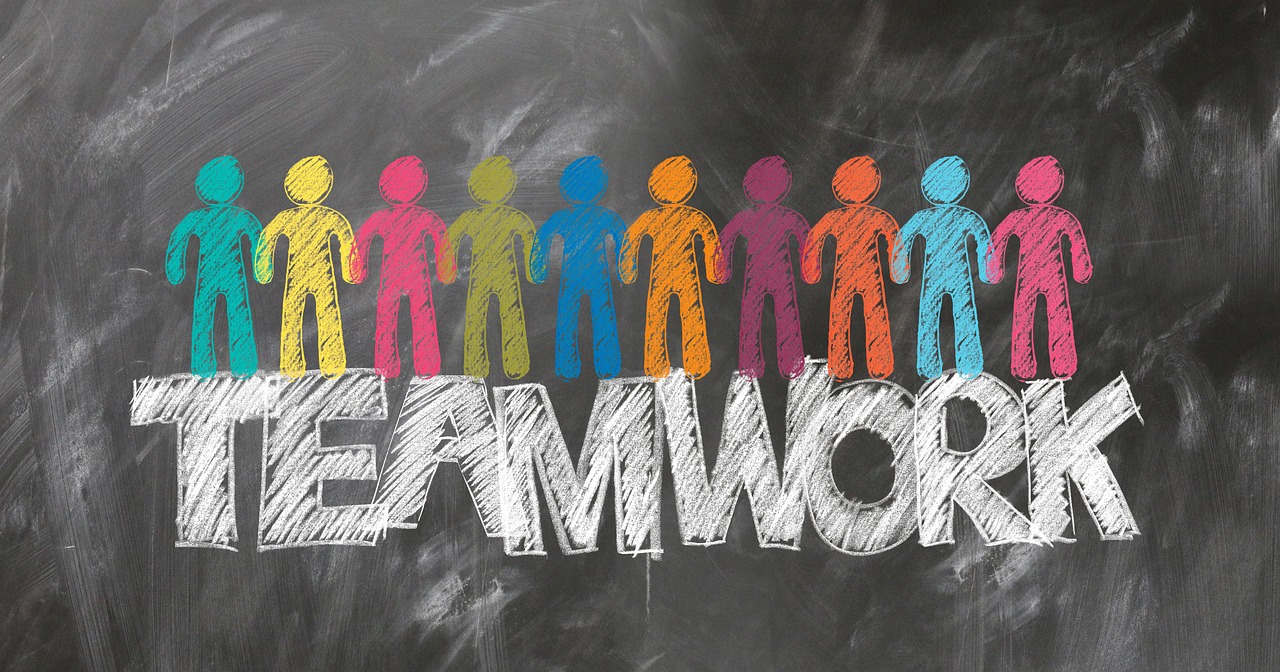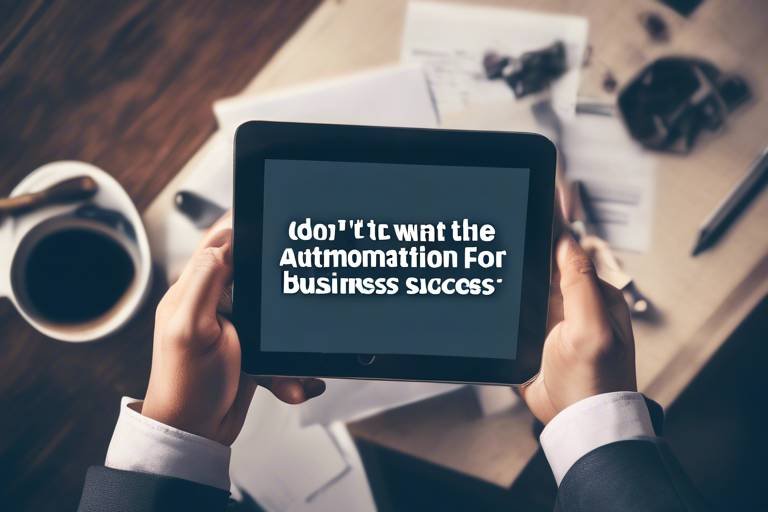Creating a Motivational Environment at Work
Creating a motivational environment at work is crucial for enhancing productivity, boosting employee satisfaction, and fostering a positive company culture. By implementing various strategies and initiatives, organizations can create a workspace where employees feel motivated, engaged, and valued. One of the key factors in cultivating a motivational environment is open communication channels. Encouraging transparent dialogue between employees and management helps build trust, improve collaboration, and ensure that everyone's voice is heard.
Recognition and rewards play a significant role in motivating employees to perform at their best. Implementing systems that acknowledge and reward employees for their contributions and achievements not only boosts morale but also reinforces a culture of appreciation and recognition within the organization.
Professional development opportunities are essential for employees to enhance their skills, grow their knowledge, and advance in their careers. Providing avenues for training, learning, and growth not only benefits the individual employee but also contributes to the overall success of the organization.
Work-life balance initiatives are vital in today's fast-paced work environment. Promoting a healthy balance between work responsibilities and personal life helps reduce burnout, improve well-being, and increase overall job satisfaction among employees.
Empowerment and autonomy are empowering employees with the freedom to make decisions, take ownership of their work processes, and contribute meaningfully to the organization's goals. By granting autonomy, employees feel a sense of responsibility and pride in their work, leading to increased motivation and engagement.
Team building activities are effective in fostering strong relationships among team members, promoting collaboration, and creating a sense of belonging within the organization. Organizing events and exercises that encourage teamwork and communication can significantly boost morale and motivation among employees.
Offering flexible work arrangements, such as remote work options or flexible hours, can help accommodate individual preferences and needs, leading to improved work-life balance and increased job satisfaction. Providing employees with the flexibility to manage their work schedules can result in higher productivity and motivation.
Wellness programs are essential for supporting employees' physical and mental health. Implementing initiatives that promote well-being, such as fitness classes, mental health resources, and stress management tools, can create a positive work environment and contribute to overall employee happiness and motivation.

Open Communication Channels
Exploring strategies to foster motivation and engagement in the workplace to enhance productivity and employee satisfaction.
Effective communication is the cornerstone of a thriving work environment. By encouraging open dialogue between employees and management, trust and collaboration can flourish. When team members feel heard and valued, they are more likely to be engaged and motivated to contribute their best efforts. Transparent communication also helps in resolving conflicts swiftly and building a strong sense of community within the organization.

Recognition and Rewards
When it comes to creating a motivational environment at work, one of the key strategies is . This involves implementing systems that acknowledge and appreciate employees for their hard work and achievements. By recognizing their contributions, employees feel valued and motivated to continue performing at their best.
Recognition can come in various forms, such as verbal praise, awards, bonuses, or even promotions. It is essential to tailor the rewards to match the efforts and accomplishments of each individual, ensuring that they feel truly appreciated for their unique contributions to the team.
Moreover, creating a culture of recognition and rewards fosters a positive work environment where employees feel encouraged to go above and beyond in their roles. This not only boosts morale but also enhances teamwork and collaboration as employees support and celebrate each other's successes.
By consistently acknowledging and rewarding employees for their hard work, organizations can boost employee engagement, retention, and overall job satisfaction. This, in turn, leads to increased productivity and a more positive company culture where employees feel motivated to excel in their roles.

Professional Development Opportunities
Exploring strategies to foster motivation and engagement in the workplace to enhance productivity and employee satisfaction.
When it comes to nurturing a motivational environment at work, providing professional development opportunities is key. By offering avenues for employees to enhance their skills and knowledge through training and growth opportunities, organizations not only invest in their employees' future but also demonstrate a commitment to their continuous improvement.

Work-Life Balance Initiatives
Achieving a harmonious work-life balance is crucial for employee well-being and overall satisfaction. Companies that prioritize work-life balance initiatives not only benefit their employees but also experience increased productivity and retention rates. By offering flexible work schedules, employees can better manage their personal responsibilities while meeting work demands. This flexibility allows individuals to create a schedule that suits their lifestyle, leading to reduced stress and improved focus during working hours.
Moreover, promoting remote work options can significantly contribute to work-life balance. Remote work provides employees with the freedom to work from a location of their choice, eliminating commute times and enhancing time management. This flexibility empowers individuals to structure their day in a way that maximizes efficiency and productivity. Additionally, remote work fosters a sense of trust between employees and management, leading to higher job satisfaction and engagement.
Implementing policies that encourage employees to disconnect from work during non-working hours is another effective strategy. By respecting boundaries and promoting a culture that values personal time, organizations can prevent burnout and improve mental well-being. Encouraging employees to take breaks, vacations, and utilize their paid time off ensures that they recharge and return to work energized and motivated.
Furthermore, offering wellness programs within the workplace can support employees in maintaining a healthy work-life balance. Providing access to fitness facilities, meditation sessions, or mental health resources can help individuals manage stress and prioritize their well-being. Wellness programs not only benefit employees on a personal level but also contribute to a positive work environment and foster a culture of holistic health and wellness.

Empowerment and Autonomy
Empowerment and autonomy in the workplace are like fuel to a rocket, propelling employees to new heights of productivity and creativity. When employees are empowered, they are given the trust and freedom to take charge of their work, make decisions, and innovate without constant supervision. This sense of autonomy not only boosts individual confidence but also fosters a culture of accountability and ownership within the organization.
Imagine a workplace where employees are encouraged to spread their wings and soar, where their ideas are valued and their voices heard. This empowerment creates a ripple effect, inspiring a sense of purpose and motivation that transcends mere job duties. By entrusting employees with autonomy, organizations unlock hidden potential and unleash a wave of innovation that can lead to groundbreaking solutions and unprecedented growth.
Moreover, autonomy goes hand in hand with trust. When employees feel trusted to handle their responsibilities independently, they are more likely to feel invested in the success of the company. This mutual trust between management and employees forms the cornerstone of a positive work environment, where collaboration flourishes, and barriers to creativity are dismantled.
Providing autonomy doesn't mean abandoning employees to navigate uncharted territories alone. It means offering support, guidance, and resources to help them thrive in their newfound independence. By establishing clear goals and objectives, organizations can empower employees to chart their own course while staying aligned with the overall mission and vision of the company.
Ultimately, empowerment and autonomy are not just buzzwords; they are the building blocks of a dynamic and engaging workplace culture. When employees feel empowered to drive their own success and are granted the autonomy to explore new horizons, the result is a workforce that is not just motivated but inspired to achieve greatness.

Team Building Activities
Exploring strategies to foster motivation and engagement in the workplace to enhance productivity and employee satisfaction.
Team building activities are like the secret sauce that adds flavor to the workplace dynamic. Imagine a team as a well-oiled machine; team building activities are the lubricant that keeps everything running smoothly. These activities are not just about fun and games; they are about building trust, improving communication, and fostering collaboration among team members.
Picture this: your team is like a group of musicians in an orchestra. Each member plays a different instrument, but when they come together and harmonize, they create beautiful music. Team building activities help your team members find their rhythm, understand each other's strengths and weaknesses, and learn to work together seamlessly.
One effective team building activity is the "Escape Room Challenge," where team members are locked in a room and must solve puzzles and riddles to escape. This activity promotes problem-solving skills, teamwork, and quick thinking under pressure. Another popular activity is the "Trust Fall," where team members demonstrate trust by falling backward and being caught by their colleagues, fostering a sense of reliance and support within the team.
By engaging in team building activities, employees not only bond with their colleagues but also develop a sense of belonging and camaraderie. These activities break down barriers, encourage open communication, and create a positive work environment where everyone feels valued and supported.

Flexible Work Arrangements
Exploring strategies to foster motivation and engagement in the workplace to enhance productivity and employee satisfaction.
Flexible work arrangements have become increasingly popular in modern workplaces, offering employees the freedom to tailor their schedules to better suit their individual needs and preferences. This approach acknowledges that not all employees thrive under the traditional 9-to-5 structure and allows for a more personalized work experience.
By providing options such as remote work or flexible hours, organizations can empower their employees to achieve a better work-life balance. This flexibility can lead to increased job satisfaction, higher morale, and improved overall well-being among employees. It also demonstrates trust from management towards their staff, fostering a sense of autonomy and responsibility.
Moreover, flexible work arrangements can result in higher productivity levels as employees are able to work during their most productive hours and in environments where they feel most comfortable and focused. This can lead to a more efficient use of time and resources, benefiting both the employees and the organization as a whole.
Implementing flexible work arrangements requires clear communication, trust, and the right technological infrastructure to support remote work. By establishing guidelines and expectations, organizations can ensure that employees remain accountable and maintain high levels of performance regardless of their physical location.
In conclusion, embracing flexible work arrangements can be a win-win situation for both employees and employers. It allows for greater work-life balance, increased job satisfaction, and improved productivity, ultimately contributing to a positive and motivating work environment.
Have a question about creating a motivational environment at work? Check out some commonly asked questions below:
- How can open communication channels benefit workplace motivation?
- What are the key components of a successful recognition and rewards system?
- Why is professional development important for employee engagement?
- What are some effective team building activities to boost morale?
- How do wellness programs contribute to a positive work environment?

Wellness Programs
Exploring strategies to foster motivation and engagement in the workplace to enhance productivity and employee satisfaction.
Wellness programs are essential initiatives that focus on supporting employees' physical and mental health within the workplace. These programs aim to create a positive work environment by addressing various aspects of well-being.
Implementing wellness programs can include activities such as yoga sessions, meditation classes, health screenings, and mental health workshops. These programs not only promote a healthier lifestyle but also contribute to reducing stress levels and increasing overall happiness among employees.
Furthermore, offering access to gym facilities, healthy snacks, and ergonomic workstations can significantly impact employees' well-being. By prioritizing wellness, organizations demonstrate their commitment to the health and happiness of their workforce.
Wellness programs also play a crucial role in boosting morale and camaraderie among employees. When individuals feel supported in their well-being, they are more likely to engage positively with their work and colleagues, leading to a more cohesive and productive work environment.
Incorporating wellness programs into the workplace is not only beneficial for employees but also for the organization as a whole. Healthy and happy employees are more motivated, focused, and resilient, ultimately contributing to improved performance and success.
Frequently Asked Questions
- How can open communication channels benefit the workplace?
Open communication channels foster trust, collaboration, and transparency within the organization. This leads to better problem-solving, increased employee engagement, and a positive work culture where ideas can freely flow.
- Why are recognition and rewards important in a work environment?
Recognition and rewards boost employee morale, motivation, and job satisfaction. They acknowledge individual efforts, encourage high performance, and contribute to a sense of appreciation and value among employees.
- What are the benefits of providing professional development opportunities?
Professional development opportunities help employees enhance their skills, stay motivated, and grow within their roles. It also shows that the organization values its employees' growth and is invested in their long-term success.
- How can work-life balance initiatives improve employee well-being?
Work-life balance initiatives reduce stress, prevent burnout, and promote overall well-being among employees. They allow individuals to recharge, maintain healthy lifestyles, and perform better at work.
- Why is empowerment and autonomy crucial in the workplace?
Empowerment and autonomy give employees a sense of ownership, responsibility, and trust in their work. This autonomy fosters creativity, innovation, and a feeling of empowerment that leads to higher job satisfaction and motivation.
- What role do team building activities play in fostering a positive work environment?
Team building activities strengthen relationships, improve communication, and build camaraderie among team members. They create a sense of unity, collaboration, and mutual support, which can enhance productivity and teamwork.
- How can flexible work arrangements benefit both employees and the organization?
Flexible work arrangements provide employees with options that suit their lifestyle and preferences, leading to increased job satisfaction and work-life balance. For the organization, it can result in higher employee retention, productivity, and a more diverse workforce.
- What are the advantages of implementing wellness programs in the workplace?
Wellness programs support employees' physical and mental health, reduce absenteeism, and create a positive work environment. They demonstrate the organization's commitment to employee well-being, leading to improved morale, engagement, and overall performance.


















